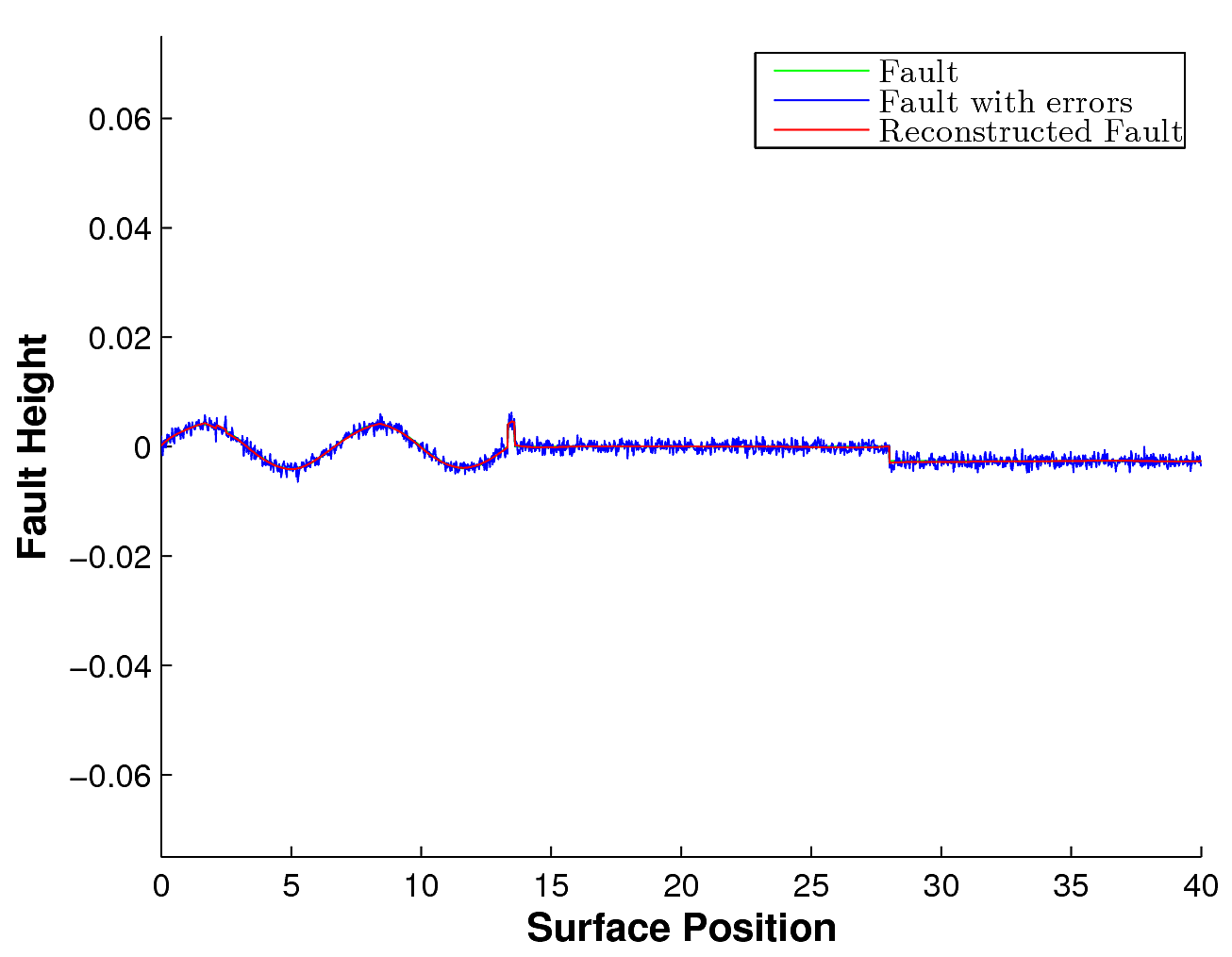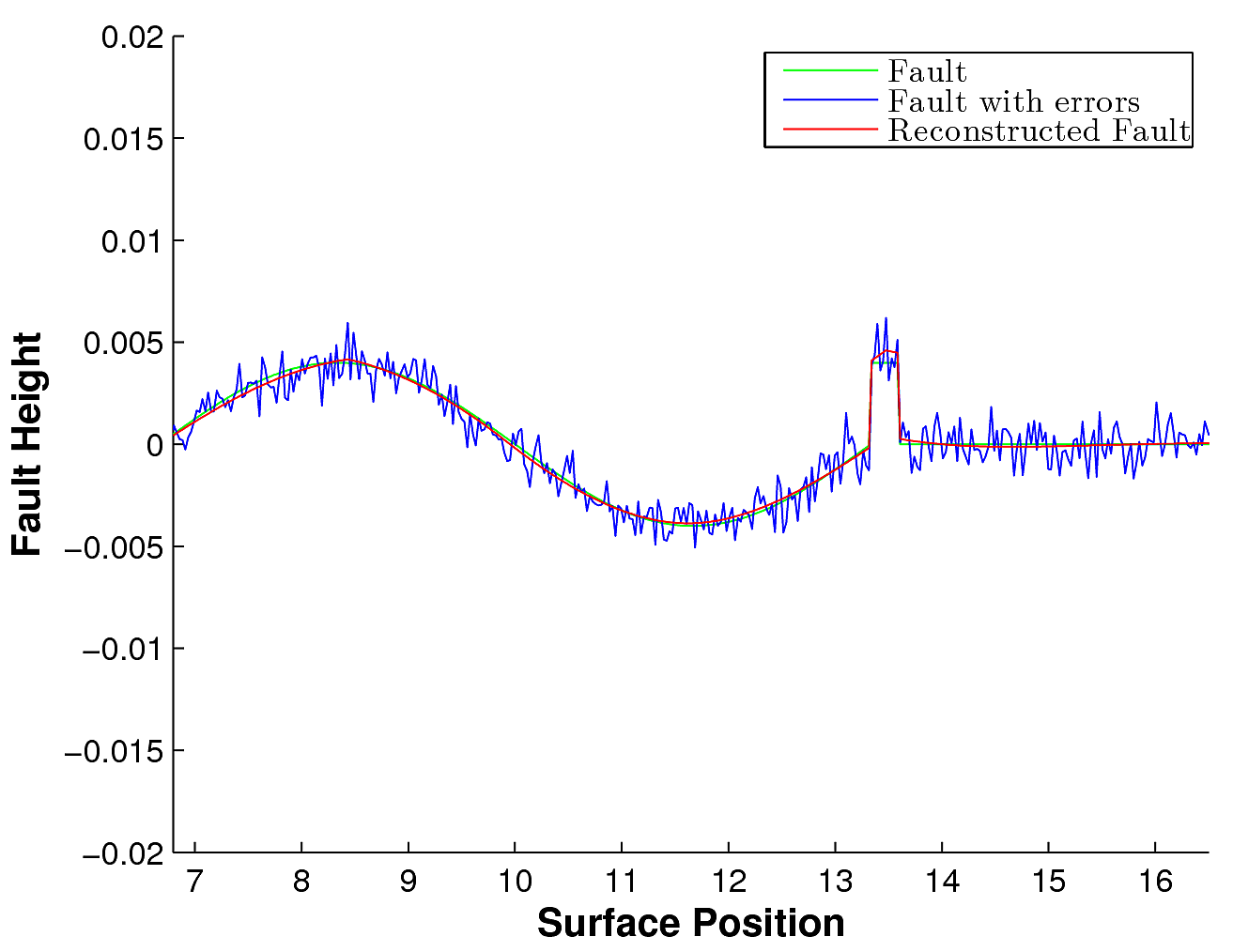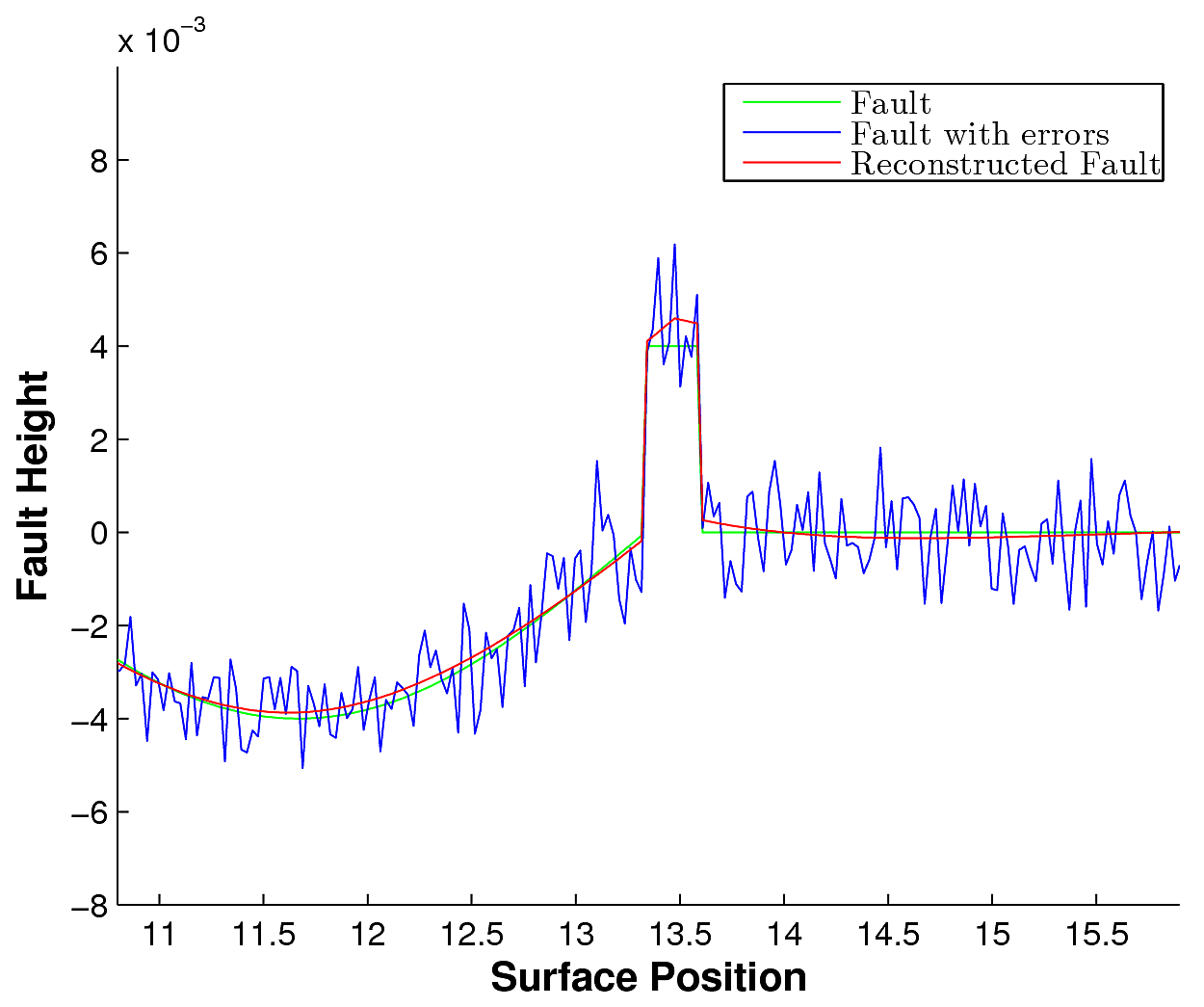
Abstract
Manufactured artefacts such as major aircraft components (wings, fuselage, tailplane) are defined at the concept and design stages using a variety of methods, namely Computer Aided Design (CAD), NACA aerofoil definitions or purely analytical descriptions (polynomials, splines, etc.). At the end of the design and development the final manufactured artefact can only be verified if it is measured. The measured data is always a set of discrete points commonly described as a point cloud (x, y, z coordinates). Our goal here is to detect the faults from point cloud and reconstruct the measured object with as few points as possible. We can then insert this minimal reconstruction into CAD, and use analytical methods, to verify if the design intent was achieved: that is if the faults interfere with flight.
Summary
Below is the outline of a wing with a bolt and two plates (green) that were not fitted together correctly (may require zooming in). The method we devised takes an imprecise measurement of this wing (blue) and returns an approximation of the wing (red), see Figure 1. The method also identifies the location and type of features (i.e. the bolt and misaligned plates).


The figures bellow (The spiky light blue image) illustrates how the method decomposes the measured data into a feature basis, much like a frequency decomposition. For more details click on this report .

